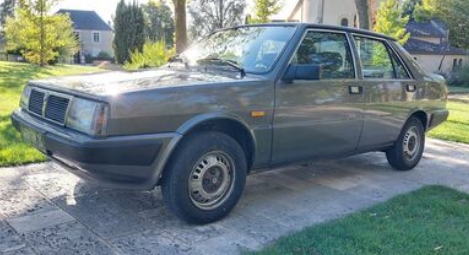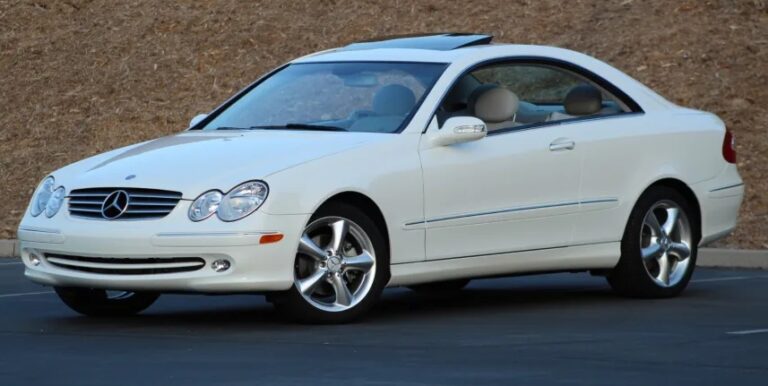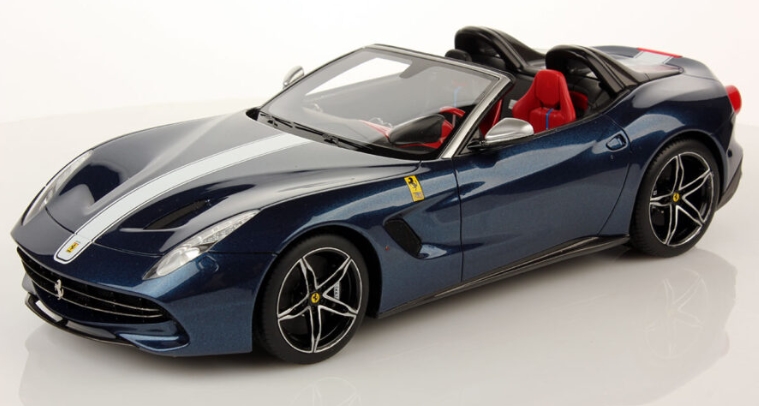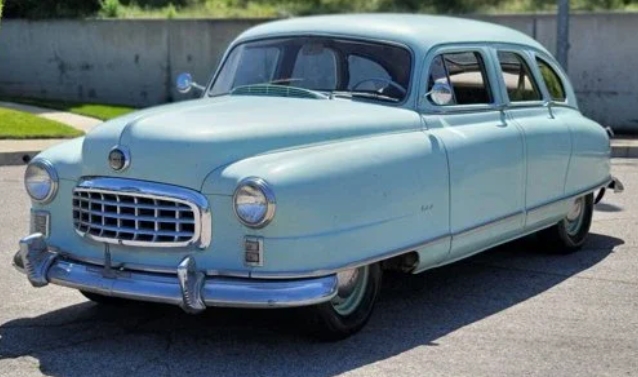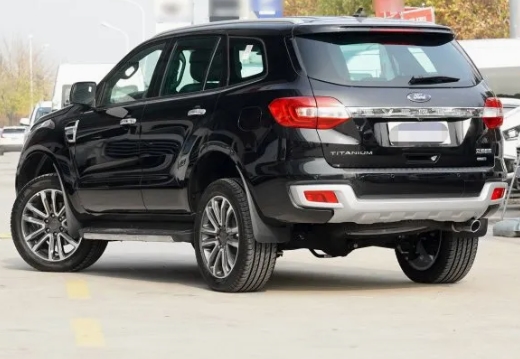The Lancia Prisma Evolution: A Journey Through Italian Design and Practicality
The Lancia Prisma, a name perhaps less etched in automotive legend than its more flamboyant siblings, nonetheless represents a fascinating chapter in Lancia’s history. Born from a desire to offer a more spacious and practical alternative within Lancia’s then-limited lineup, the Prisma carved out its niche as a sophisticated, front-wheel-drive saloon that dared to infuse everyday motoring with a touch of Italian flair. Produced from 1982 to 1989, the Prisma was a car that aimed to blend family practicality with a distinct, if understated, sense of style.
The Genesis of a Practical Lancia (1982-1986): The First Generation
The early 1980s saw Lancia in a period of strategic evolution. The iconic, albeit niche, Beta was phasing out, and the company needed a solid, volume-oriented saloon to complement the sporty performance of the Montecarlo and the compact appeal of the smaller models. The solution came in the form of the Prisma, which was, in essence, a four-door saloon version of the Lancia Delta hatchback. This shared platform strategy was a clever move, allowing Lancia to leverage existing engineering and manufacturing while creating a distinct product.
The first generation Prisma debuted in 1982, immediately recognizable by its angular, wedge-shaped styling, a hallmark of 1980s automotive design. It was an era of clean lines and aerodynamic aspirations, and the Prisma, penned by the Pininfarina design studio, exuded a certain understated elegance. Its silhouette was longer and more formal than the Delta, with a prominent boot and a discreetly integrated spoiler on the boot lid. Inside, the Prisma offered a more refined and spacious cabin than its hatchback counterpart, prioritizing comfort and practicality for families and business users.
Under the bonnet, the initial range offered a choice of dependable Fiat-derived engines. The base model was the Prisma 1300, powered by a 1.3-liter (1301cc) engine producing approximately 75 horsepower. This was a sensible choice for urban commuting and economical motoring. Stepping up was the Prisma 1500, featuring a larger 1.5-liter (1498cc) engine that delivered around 85 horsepower. This provided a more spirited performance without a significant penalty in fuel consumption.
For those seeking a more potent experience, Lancia offered the Prisma 1600, which utilized a 1.6-liter (1585cc) engine. This engine was available in two states of tune. The standard Prisma 1600 produced around 95 horsepower, while the more performance-oriented Prisma 1600 GT boasted a slightly higher output, typically around 105 horsepower, thanks to features like twin-choke carburetion. The GT model also featured sportier interior and exterior touches, hinting at Lancia’s tradition of performance.
In terms of trim levels, Lancia aimed to cater to different needs and budgets. The standard models, including the 1300, 1500, and 1600, offered a comfortable and well-equipped interior for its class. Key features often included adjustable headrests, a rear bench seat with a folding backrest for increased luggage space, and a decent array of instrumentation.
The Prisma GT (and later the Prisma GT Super) was designed to appeal to the enthusiast with a taste for performance. These models typically featured more supportive sports seats, a rev counter as standard, alloy wheels, and sometimes subtle body enhancements like side skirts or a sportier grille. The “Super” designation often implied a higher level of standard equipment, potentially including electric windows, power steering (which was becoming increasingly common in the mid-80s), and enhanced upholstery.
Beyond the petrol offerings, Lancia, always keen to explore alternative powertrains, introduced a diesel variant. The Prisma 1900 Diesel, powered by a 1.9-liter (1929cc) engine, offered a more economical and durable option for long-distance drivers. While not a performance champion, its torque and fuel efficiency made it a popular choice, particularly in European markets. This diesel engine produced around 65 horsepower, emphasizing economy over outright speed.
The early Prisma was praised for its comfortable ride, spacious interior, and distinctive Lancia styling. It was a car that could competently handle family duties while still offering a degree of driving pleasure that was sometimes absent in its more mundane competitors. However, like many Italian cars of the era, build quality and reliability could sometimes be a point of contention, with rust being a particular concern for the Prisma.
.

.
Refinement and Expansion (1986-1989): The Second Generation Facelift
Recognizing the need to keep pace with automotive trends and address any perceived shortcomings, Lancia introduced a significant facelift for the Prisma in 1986. This second generation, while retaining the core identity of the original, brought a series of updates that refined its appearance and mechanicals.
Externally, the facelift brought a softer, more contemporary look. The sharp edges of the original were rounded off, particularly around the front and rear fascias. The grille was redesigned, and the headlights were often subtly altered to give the car a more modern visage. The revised styling was still quintessentially Lancia, maintaining a sense of sophisticated restraint.
Inside, updates were equally important. The dashboard received a redesign, often with improved ergonomics and a more modern layout of instruments and controls. The quality of materials was also subtly improved, aiming to enhance the premium feel of the cabin.
Mechanically, the 1986 facelift saw the introduction of new engine options and refinements to existing ones. The Prisma 1300 continued, but the Prisma 1500 was revised. A significant addition to the petrol range was the Prisma 1600 i.e., which featured fuel injection, boosting power to around 90 horsepower and improving efficiency. This marked a move towards more modern engine technology.
The performance-oriented models also saw updates. The Prisma 1600 GT (and GT Super) remained a popular choice, with its lively performance. However, Lancia also introduced the more potent Prisma 1.9 i.e., often featuring the 1.9-liter engine with fuel injection. This model offered a good balance of performance and economy.
The diesel engine continued to be an important part of the Prisma offering. The Prisma 1900 Diesel received minor improvements, and a more powerful Prisma 1900 TD (Turbo Diesel) was introduced, offering a significant boost in performance for diesel enthusiasts. This turbo-charged variant provided more torque and a more engaging driving experience, making the Prisma a more viable option for those who covered high mileage.
Trim levels continued to evolve. The base models offered a good level of standard equipment, while higher-spec versions, often designated with “LX” or “Super,” included features like power steering, electric windows (front and sometimes rear), central locking, and improved interior trim. The GT models retained their sporty character with enhanced upholstery and styling cues.
The later Prisma models, particularly those from 1986 onwards, benefited from the ongoing development of Fiat Auto components. While the Italian automotive industry of the late 1980s still grappled with certain quality issues, the Prisma was generally considered a competent and well-rounded family saloon. Its strengths lay in its comfortable and refined ride, its spacious interior that could comfortably seat a family, and its undeniable Lancia character.
The Prisma’s journey as a practical, stylish saloon was coming to an end by the late 1980s. The automotive landscape was changing, with a growing demand for more aerodynamic shapes and the increasing prevalence of front-wheel-drive designs. By 1989, production of the Lancia Prisma ceased, having sold around 386,000 units worldwide.
The Prisma’s Legacy: A Practicality with Italian Panache
While not a car that commanded the same iconic status as a Lancia Stratos or a Fulvia, the Prisma holds a significant place in the brand’s modern history. It represented Lancia’s ability to translate its design philosophy and engineering prowess into a more accessible and practical package. It was a car that dared to be more than just a utilitarian four-door.
The Prisma offered a compelling alternative to the more staid offerings from its competitors. It possessed a certain Italian flair, a subtle elegance that distinguished it from the mass-produced saloons of the era. For those who appreciated understated design, a comfortable ride, and a touch of Italian character in their everyday motoring, the Lancia Prisma was a thoroughly appealing proposition.
Its shared platform with the incredibly successful Lancia Delta ensured its viability, allowing Lancia to offer a distinct product without a complete reinvention of its engineering. The Prisma demonstrated that practicality and style were not mutually exclusive, and that even a family saloon could possess a refined and engaging personality.
Today, the Lancia Prisma, particularly well-preserved examples, can be found appreciated by enthusiasts for its unique blend of practicality and Lancia’s enduring design heritage. While its numbers may not be as vast as some of its contemporaries, the Prisma remains a testament to Lancia’s ability to produce cars that, while perhaps not always the most overtly exciting, were always imbued with a distinct character and a touch of Italian sophistication. It was a Lancia that aimed to be a sensible choice, but never at the expense of style.
